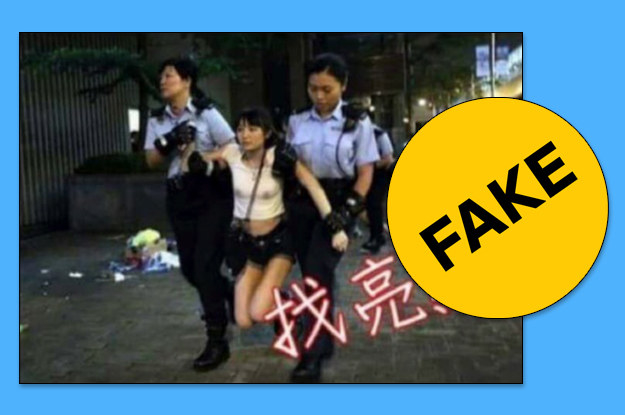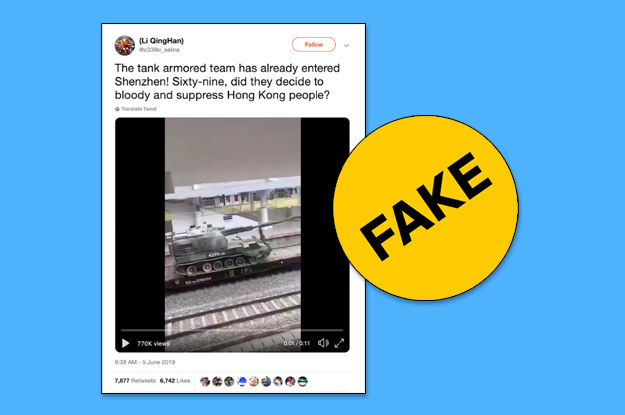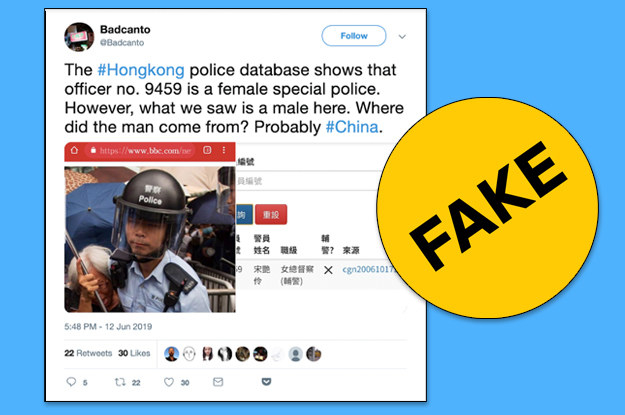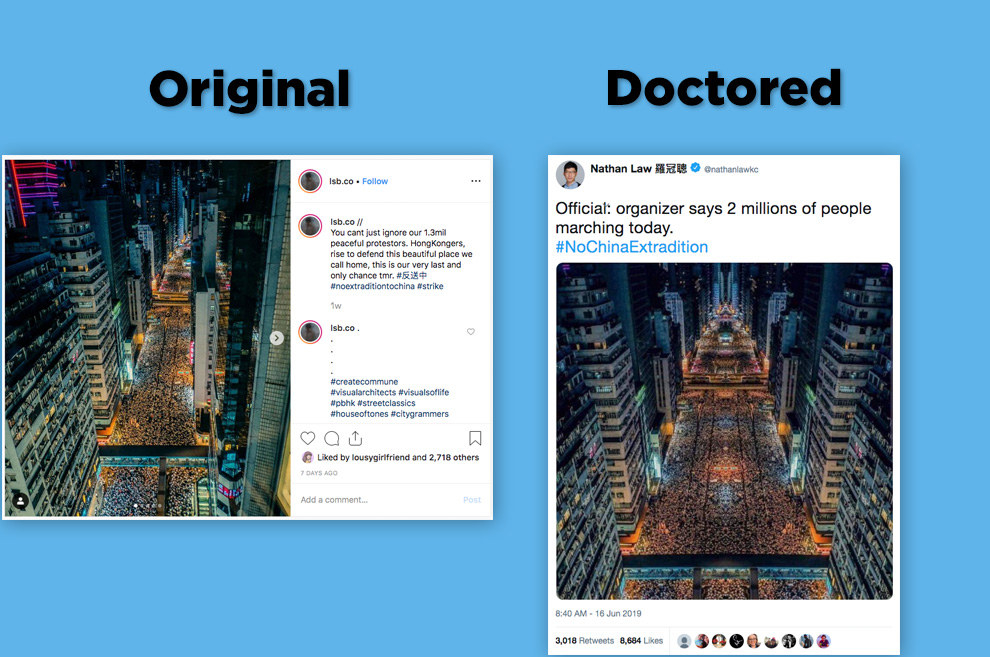Protests erupted in Hong Kong this week, with organizers estimating over 1 million people attended a June 9 rally in opposition to a proposed extradition bill. Critics of the bill fear political opponents will be targeted and worry there aren’t enough safeguards to protect legal and human rights for defendants once extradited to the mainland. China’s previous behavior toward Hong Kong, such as abducting booksellers in 2016, has only fueled tensions.
Hong Kong leader Carrie Lam announced on June 15 that the controversial China extradition bill would be suspended. Despite this, protests continue to attract millions, with people demanding the bill be fully withdrawn and also calling for Lam's resignation.
During and after police and protesters clashed on the street, different types of disinformation have spread online. Here’s a look at the hoaxes and falsehoods.
1. Coverage of the protests by Chinese state media outlet China Daily has been inaccurate and misleading.

Chinese state media outlet China Daily published two misleading articles about the Hong Kong protests that attempted to downplay their significance. The articles omit facts and use inaccurate data to paint a false narrative about the demonstrations.
On June 9, one million Hong Kongers rallied in opposition to the extradition bill, but China Daily’s coverage failed to mention this. Instead it reported that an alleged 800,000 people supported the bill and only 240,000 opposed it.
The next Sunday, June 16, an estimated 2 million Hong Kongers attended an opposition rally. But China Daily again failed to mention this. Instead it reported that the protests were against US meddling in Hong Kong affairs. The headline misrepresents the truth while also playing into a baseless conspiracy theory that has circulated online, which alleges the CIA aided opposition protesters.
Access to information is severely restricted in mainland China, and these articles show how the Chinese government can use propaganda to mislead people and distort facts.
2. A photoshopped image was used to falsely suggest a female activist was arrested for being “indecent.”

Ho Ka Yau is an activist and a member of the pro-democracy party Demosisto. That’s the same party Hong Kong’s best-known activist, Joshua Wong, belongs to.
A pro-police Facebook page, Salute to HK Police, shared a photo of Ho with nipples photoshopped on her shirt. This led people to speculate she was arrested for being “indecent.” But it’s an obvious fake and has since been deleted.
In a response on Facebook, Ho posted a real photo of herself from that night and said:
“The comments were basically comprised of people calling me a prostitute, saying that the police were cleaning out sex workers, and people saying that they were ashamed for my parents. The easiest way to attack a woman is through sexual insults. Ignore her will, ignore her vision, and focus on her appearance and way of dress, and then shame her from there.”
3. A viral video said to show Chinese troops stationed near the Hong Kong border is fake.

A video said to show a convoy of Chinese military tanks near the Hong Kong border went viral on Twitter. But the footage was not taken near the border, it was filmed at Longyan station in Fujian Province, over 320 miles from the border. A sign for Longyan station is clearly visible in the footage.
China’s foreign ministry also confirmed it is not sending troops to Hong Kong.
4. In a viral claim, people suspected that a police officer was actually a Chinese agent in disguise.

People used an outdated database to check the badge number of a Hong Kong police officer. When the database showed his badge number belonged to a woman officer, people speculated the officer was a Chinese agent in disguise. But the database used is 13 years old and not official. It only collects data on awards given to officers for long-term service and is therefore not a reliable source for current information.
5. China did launch a cyberattack against Telegram, the primary messaging app used by protesters.
@DefTechPat @telegram IP addresses coming mostly from China. Historically, all state actor-sized DDoS (200-400 Gb/s of junk) we experienced coincided in time with protests in Hong Kong (coordinated on @telegram). This case was not an exception.
During the protest, a DDoS attack targeted Telegram, the primary app protesters used to organize and communicate with each other. Telegram CEO Pavel Durov confirmed on Twitter that the cyberattack came from Chinese IP addresses.
6. This photo is not from Hong Kong, it’s from France.

This photo of a protester using a tennis racket to return a tear gas canister circulated on Twitter, Reddit and other forums during the June 12 rally. But it was not taken in Hong Kong. It was shot by a Reuters photographer during June 2016 demonstrations in France.
7. This viral aerial photo of a protest has been doctored.

A photo of a protest crowd went viral on Twitter after being shared by a well-known Hong Kong activist, but the image was doctored. The perfectly symmetrical photo (above right) has been cropped and mirrored, according to the original photographer, who confirmed on Instagram that this version was edited. Viewing the location of the photo on Google Maps also reinforces the difference between the original and edited versions.
UPDATE
New information was added about the suspension of the China extradition bill.
UPDATE
Added another example of misinformation from China Daily.


